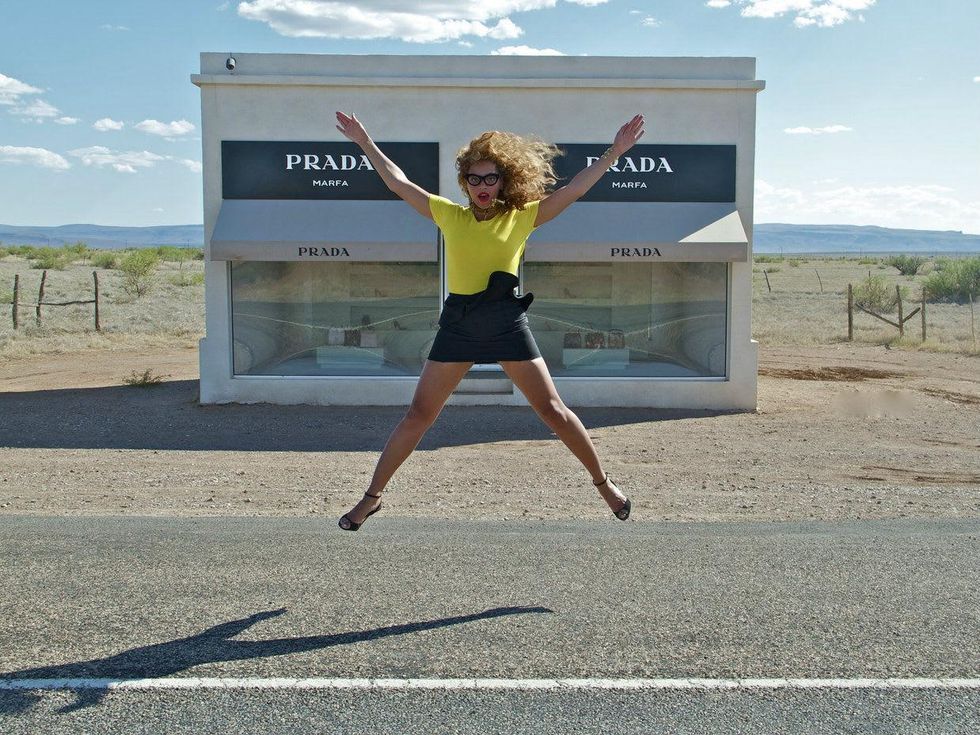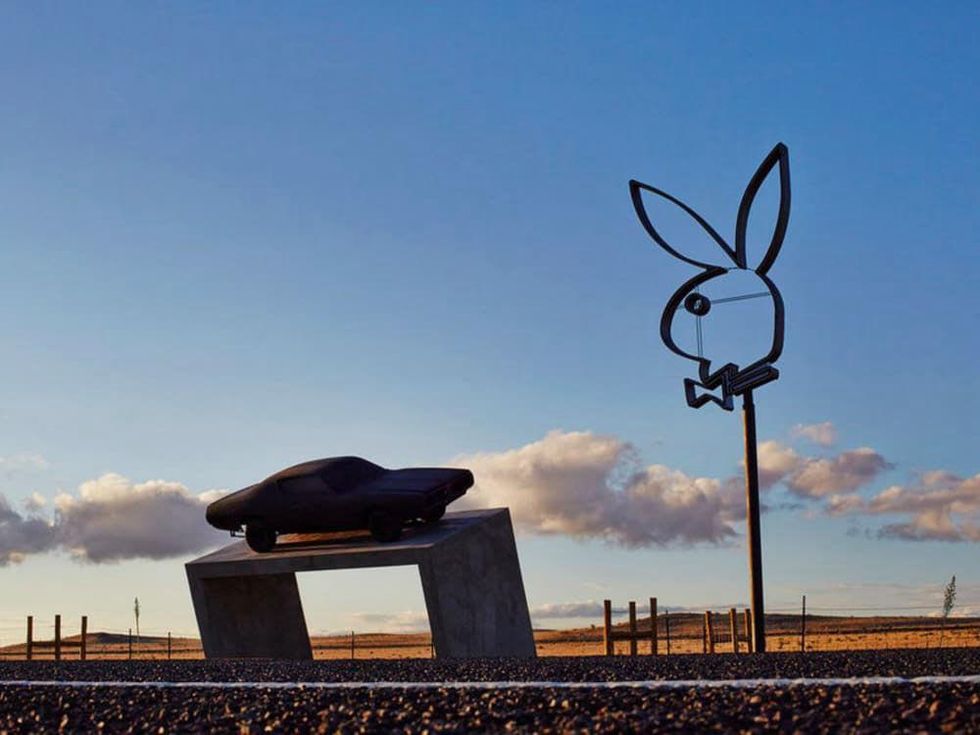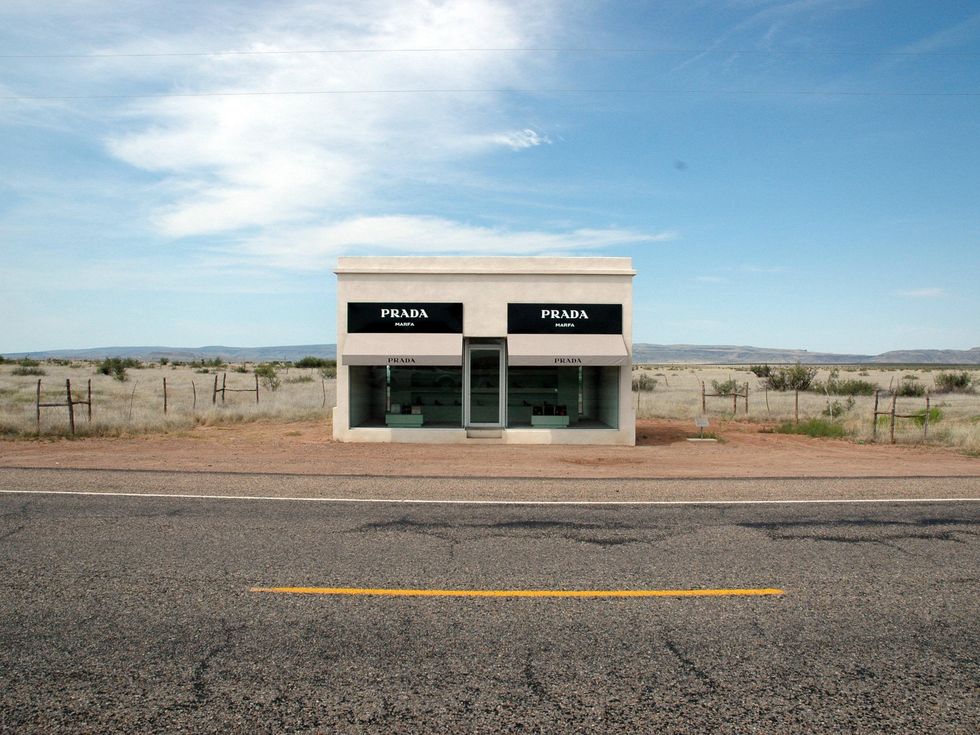Art controversy
Ads or art? Prada joins Playboy on TxDOT's hit list in west Texas desert
First Playboy, now Prada.
The Texas Department of Transportation has labeled a Prada storefront art installation in the Chihuahuan desert, 35 miles northwest of Marfa, as "illegal outdoor advertising."
The Prada store, created by Scandinavian artists Michael Elmgreen and Ingar Dragset, has drawn thousands of tourists since opening in 2005 on land along Highway 90 (Beyoncé posted a photo of herself in front of the installation on Tumblr last summer), but TxDot says it's in violation of the 1965 Highway Beautification Act and could be forcefully removed.
"If it really is against the regulations, they should have found out in 2005 when it was erected."
The department has not decided what action it will take.
The $80,000 project, which was not funded by Prada but by New York nonprofits Art Production Fund in collaboration with Ballroom Marfa, consists of a 15-foot-by-25-foot adobe "store" featuring six bolted-down handbags and 20 shoes (the right shoe only, to discourage theft) from Prada's 2005 fall/winter collection. It is never open and the items are not for sale. The artists intend for the building to degrade over time.
"It was meant as a critique of the luxury goods industry, to put a shop in the middle of the desert,' Mr Elmgreen told The New York Times. "If it really is against the regulations, they should have found out in 2005 when it was erected."
The legitimacy of the Prada installation was questioned only after TxDot determined in July that a 40-foot neon Playboy bunny sign erected next to an elevated 1972 Dodge Charger, on the same highway just a mile outside of Marfa, was an illegal outdoor advertisement. Titled "Playboy Marfa," the installation was designed by artist Richard Phillips for Playboy.



